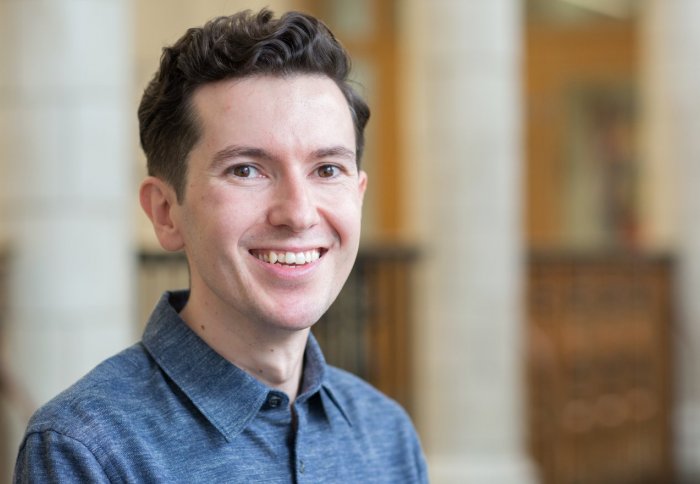Welcoming new staff in Materials

Professor Aron Walsh, Department of Materials, Imperial College London
Interview with new academic member of staff Professor Aron Walsh
In October 2016, the Department of Materials welcomed new staff in the Theory and Simulation of Materials group. We meet one of them today from the Theory and Simulation of Materials theme: Professor Aron Walsh
What inspired you to do science and Materials Science, in particular?
I have always had a fascination with computers, and mathematics was my favourite subject at school. Computational materials science combines these interests to understand how microscopic interactions gives rise to macroscopic properties such as colour, conductivity, and magnetism. It is an incredibly exciting time to work in my field as theory and simulation is being placed at the forefront of materials discovery.
What attracted you to Imperial and what do you look forward to the most in your time in the Department of Materials?
I visited the Science Museum on my first trip to London over 20 years ago, which is when I came to know Imperial. My research is on the borderline between materials chemistry and physics. I have always felt a little out of place in a pure chemistry department. In my view, the Department of Materials is progressive with a unique mix of science and engineering supported by theory and experiment. I look forward to learning a lot from my new colleagues!
Would you like to tell us a little bit about what you were doing before and about your personal academic history?
During my PhD, I studied structure-property relationships in heavy metal oxides such as SnO, PbO and HgO. After graduation from Trinity College Dublin, I moved to the US Department of Energy to work at the National Renewable Energy Laboratory (Colorado) and focus on new materials for solar energy harvesting. I then held a European fellowship at University College London, and a Royal Society fellowship at the University of Bath. For the past five years, my group has been working hard on understanding hybrid halide perovskites, which are the breakthrough materials for thin-film solar cells.
You are a Chair in Materials Design, could you tell us about this area and some of the applications – present and future?
There is a strong demand for novel materials with tailored properties – the challenge is to identify them. We are now very good at explaining why materials exhibit certain chemical and physical properties, but not at identifying new materials that fulfil certain criteria. My research aims to combine elements of high-throughput screening, materials informatics, and machine learning in order to provide a computational platform for the accelerated discovery of materials. Our initial focus in on solar energy, but the same techniques can be applied across a wide application space.
Would like to talk to us about the opportunity the Philip Leverhulme Prize for Chemistry offers you?
I was honoured to win this prize that comes with flexible funding to support my general research activities. I have been developing collaborations with researchers at Kyoto University (Japan) and Seoul National University (South Korea), and this will give me the chance to build on our initial efforts, with student exchanges and joint workshops focused on technique and method development. These type of underpinning activities can be difficult to fund through the UK research councils, so I will take full advantage of the generosity of the Leverhulme Trust.
What is your typical day like at the moment?
My first few months at Imperial have been a little chaotic as I get to know a new system, meet new colleagues and students, while managing my research group and making appearances at conferences around the globe. The support staff in the Department of Materials have been wonderful! A big advantage of moving is the opportunity to refocus my research efforts, so I am busy outlining new ideas and funding proposals. When I have any spare time, I am found reading and writing papers in my office, which is actually my favourite task.
You are making people are envious, how do you get so many people to attend your seminars?
I am fortunate to work in a field that gets people excited, and I think there is an element of novelty in having a young professor. I also embrace social media, which helps to attract some interest. On Twitter there is an active community of materials scientists, including students, researchers, journal editors, and even our own Head of Department (@peterdhaynes).
Article text (excluding photos or graphics) © Imperial College London.
Photos and graphics subject to third party copyright used with permission or © Imperial College London.
Reporter
Caroline Detchenique
Department of Materials